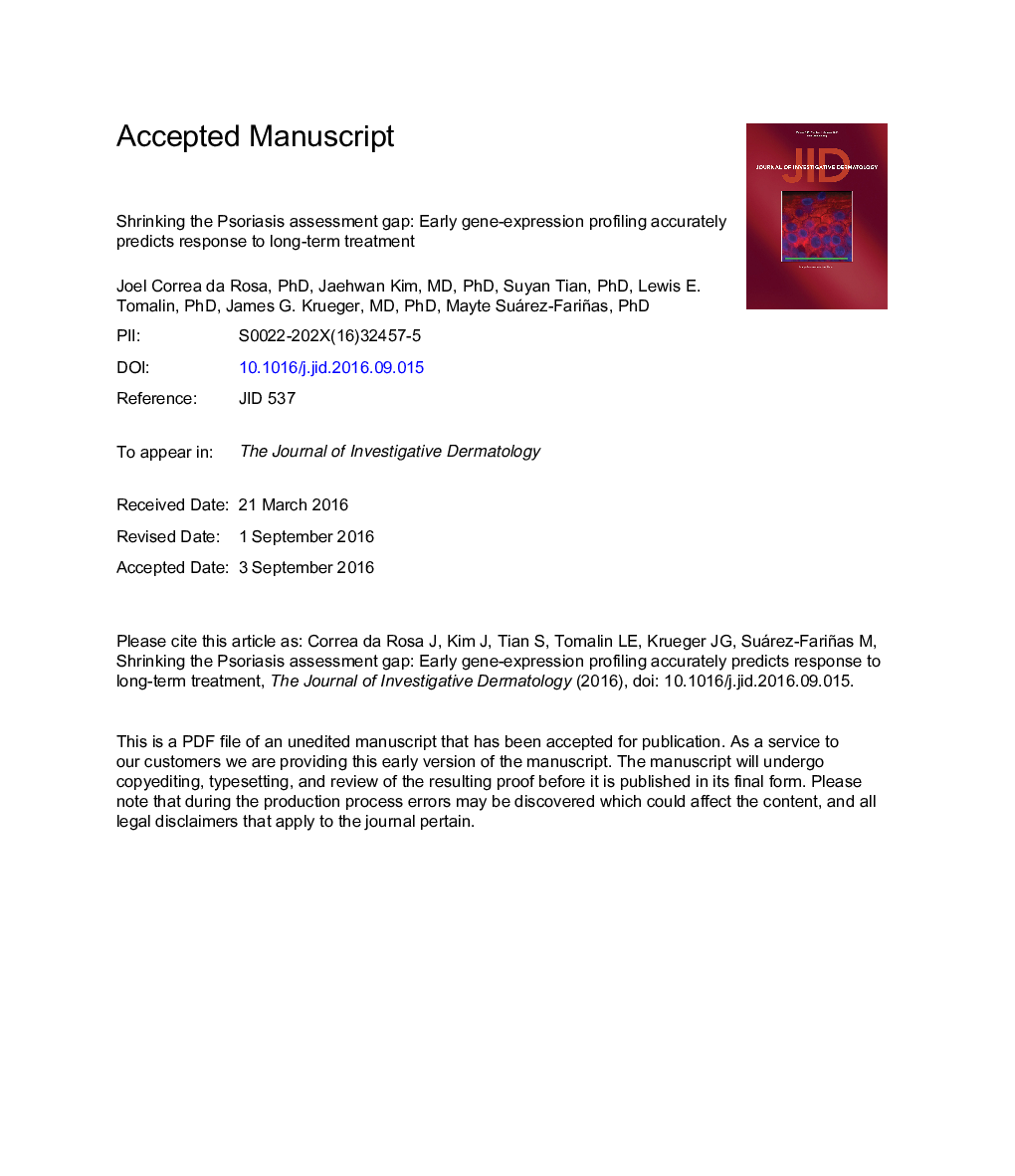| Article ID | Journal | Published Year | Pages | File Type |
|---|---|---|---|---|
| 5649778 | Journal of Investigative Dermatology | 2017 | 27 Pages |
Abstract
There is an “assessment gap” between the moment a patient's response to treatment is biologically determined and when a response can actually be determined clinically. Patients' biochemical profiles are a major determinant of clinical outcome for a given treatment. It is therefore feasible that molecular-level patient information could be used to decrease the assessment gap. Thanks to clinically accessible biopsy samples, high-quality molecular data for psoriasis patients are widely available. Psoriasis is therefore an excellent disease for testing the prospect of predicting treatment outcome from molecular data. Our study shows that gene-expression profiles of psoriasis skin lesions, taken in the first 4 weeks of treatment, can be used to accurately predict (>80% area under the receiver operating characteristic curve) the clinical endpoint at 12 weeks. This could decrease the psoriasis assessment gap by 2 months. We present two distinct prediction modes: a universal predictor, aimed at forecasting the efficacy of untested drugs, and specific predictors aimed at forecasting clinical response to treatment with four specific drugs: etanercept, ustekinumab, adalimumab, and methotrexate. We also develop two forms of prediction: one from detailed, platform-specific data and one from platform-independent, pathway-based data. We show that key biomarkers are associated with responses to drugs and doses and thus provide insight into the biology of pathogenesis reversion.
Keywords
Related Topics
Health Sciences
Medicine and Dentistry
Dermatology
Authors
Joel Correa da Rosa, Jaehwan Kim, Suyan Tian, Lewis E. Tomalin, James G. Krueger, Mayte Suárez-Fariñas,
